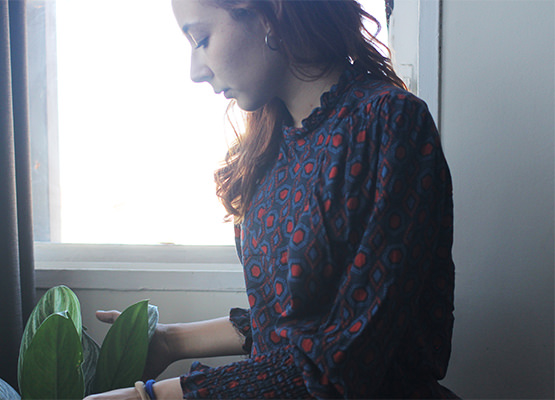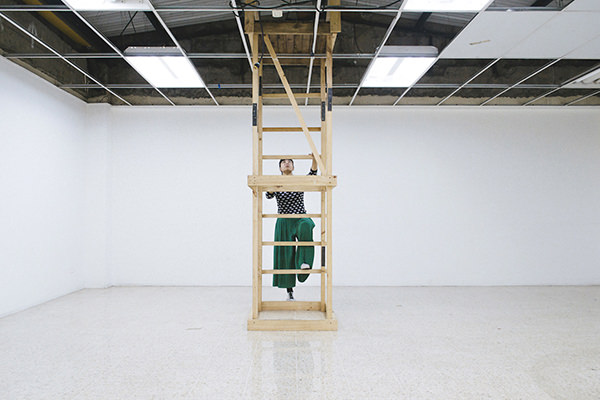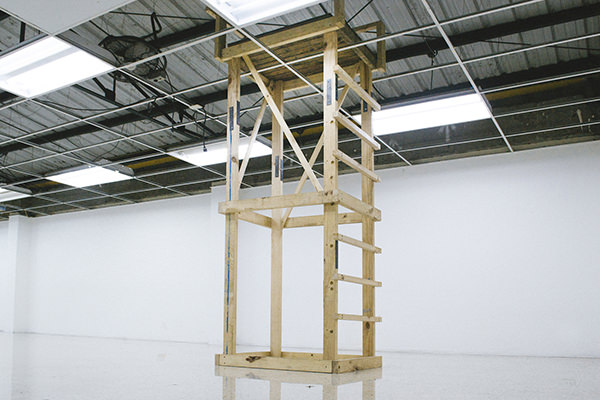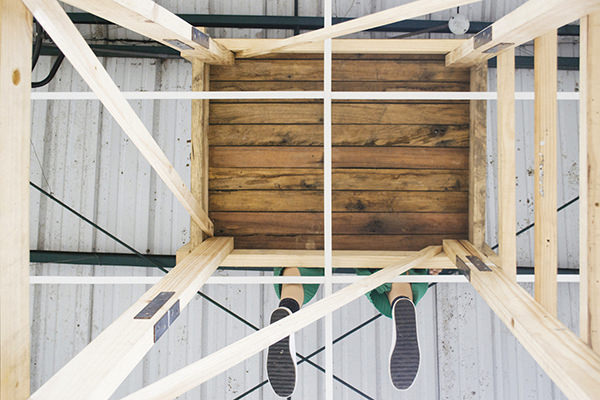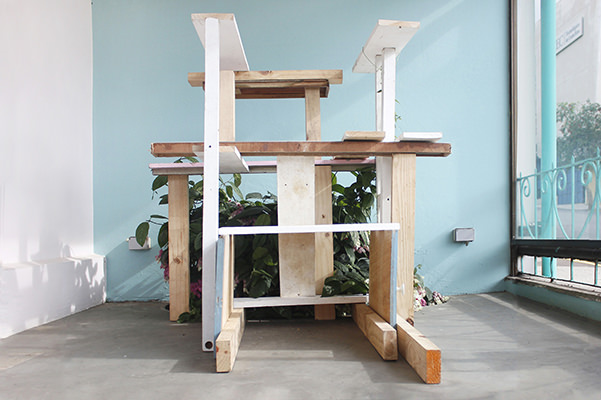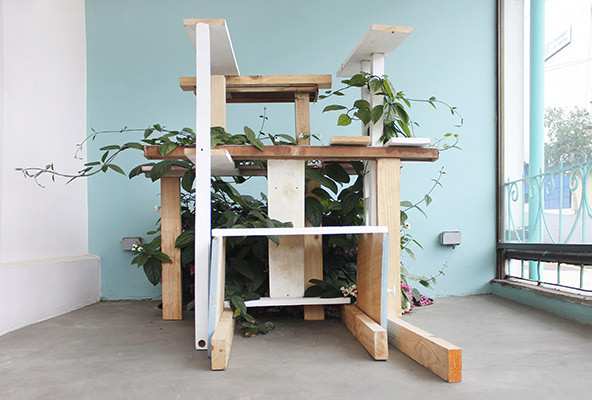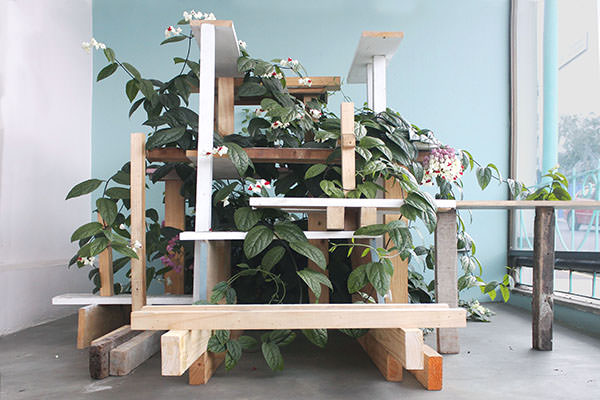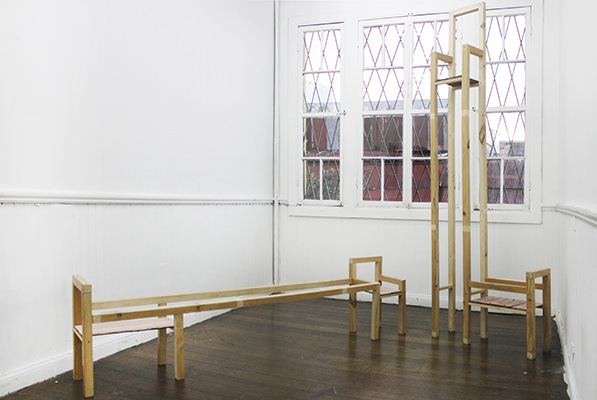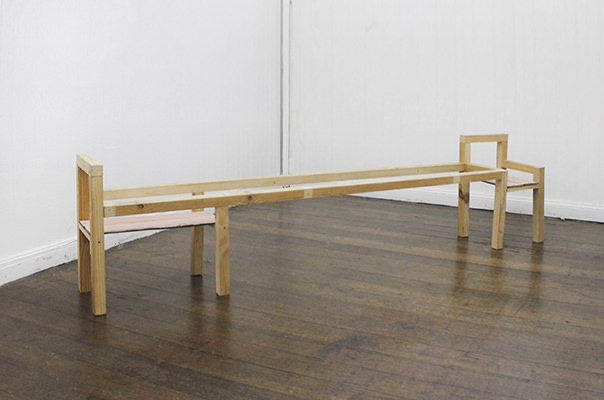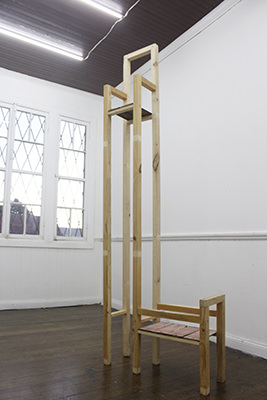From 2016 until 2019, Random Institute ran the curatorial program of the international contemporary art center Despacio in San José, Costa Rica.
This site was coded by Sarvesh Dwivedi and Emmanouil Zoumpoulakis and designed by Sandino Scheidegger.
The Everyday as Another
With COVID-19 testing our flexibility, we had to postpone the 2020 edition of our annual Travel Award residency. In the meantime, we’ve commissioned a text about this year’s winner, Verónica Alfaro, to shed light on the forgotten objects and transformative processes behind her unique art practice. Read on to find out how her work just might change the way you see the world.
ThoughtsThoughts
When Verónica Alfaro stopped studying chemistry at university to pursue her art practice, she did so, she says, in search of uncertainty. Maybe this is what led to one of her early pieces, Interval (2016), which gives us a glimpse into what would later serve as her work’s primary focus. Organized into three looping images called “infinite intervals,” this piece carves open-ended beauty out of the overlooked details of everyday life. A few carefully selected objects oscillate before us, transforming a simple perspective or mesh of fabric into slices of pure time, light, and texture.
Transformation is key in Alfaro’s work, both as a source of inspiration and a process set into motion by her installations. Her practice is rooted in the house she has lived in since childhood, a very old, typically Costa Rican building as rich in history as it is in color and texture. Yet for all its beauty, this space is also one of melancholy for the artist, who has watched it come undone over the years and grown slowly aware that her generation will likely be the last to live there.
This isn’t to say that Verónica Alfaro is bereft or simply nostalgic in the face of change. Rather, her work faces change head on. Instead of denying the natural cycles that inevitably make things disappear, she brings these cycles to center stage. This allows her to turn the hidden, forgotten, or disintegrating elements of daily experience into protagonists, giving them a soul and a voice of their own. And in so doing, she sheds new light on what’s been left behind—she transforms the transformation itself, taking the viewer on a journey that invites them to rethink the very essence and relationships of the flux around them.
Time may conquer everything. But Alfaro’s work has found a powerful way to make this more than a passive experience of loss. By giving life to the things she gathers, she lets the conquered world they embody take shape on its own terms. In Esmeralda (2018), for example, she has created a unique construction that reimagines the rules we typically follow when making one. What if we built a dwelling around what a plant, rather than a person, was trying to tell us? This simple question taps into the heart of any great artist’s approach. Verónica Alfaro doesn’t give us what we want or expect to see; she gives us an entirely new way of seeing.
In recent years, Alfaro’s work has become recognizable for its distressed wood and faded pastel colors, always carried by found materials that play with our preconceptions of space. Ceiling Viewer (2018) invites viewers to contemplate what most would call the “useless” ceiling space of a gallery, while Between A and B (2018) allows us to imagine an impossible meeting between two spaces through the surprising forms of two chairs. In both pieces, the forgotten past serves as a base for reconfiguring how we think and move through the spaces we inhabit in the present.
Verónica Alfaro is a collector. She gathers every fragment of wall or floor, every broken piece of wood or unusable object she comes across. Though her works use this material quietly, sometimes even randomly like in Resistance Exercises (2018), there is always a direction, and a memory, behind the explorations her installations take us on. It just happens to be one we didn’t ever know was there.
→ visit Alfaro’s studio online
→ visit Alfaro’s website
InformationInformation
This text is by Jeremy Cohen, a writer from San Francisco who currently lives in Tallinn, Estonia.
Learn more about the Random Institute Travel Award.
